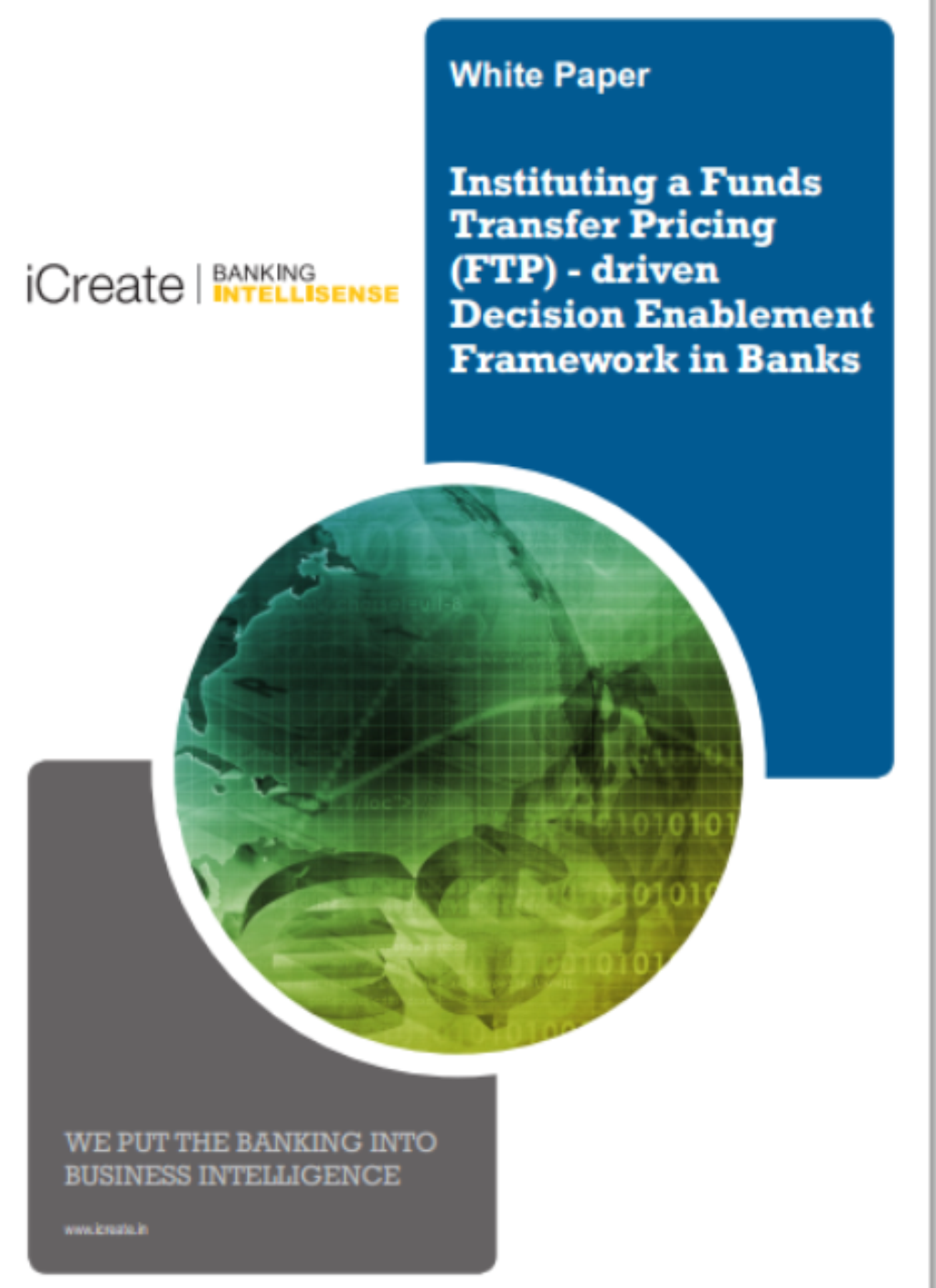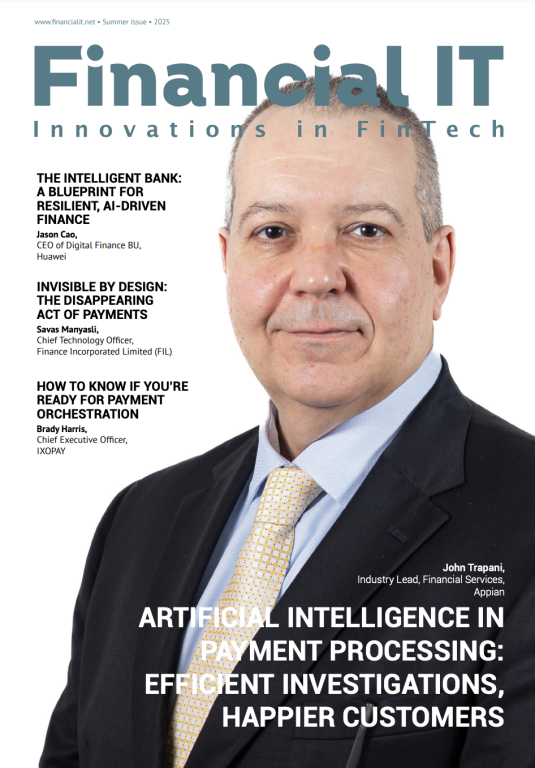Published
- 02.11.2014 -- 05:01 pm
Financial IT interviews Eugene Danilkis,Co-Founder and Chief Executive at Mambu.
Other Videos
- 02.11.2014 -- 04:28 pm
Financial IT interviews Jennifer Hanes, Chief Operating Officer, IntelliMatch at SunGard and Paul J. Clapis,Director of Product Management for SunGard's IntelliMatch at Sibos 2014.
Other Videos
- 03:00 am

A survey conducted by Compass Plus, an international provider of retail banking and electronic payments software to financial institutions and processors, has revealed that there are three main challenges hindering the mass adoption of contactless payments in the UK; card distribution, fears around security and regional awareness.
The survey, in which more than 700 consumers answered questions about their banking and payments habits, was carried out across the UK, in Sheffield, Nottingham, Wellingborough and London. The results found that despite industry claims that contactless cards are now widespread, more than two-thirds of respondents (70.7%) stated that they still do not have a contactless-enabled card in their wallet. Predictably, the group with the highest number of enabled cards were those based in London, however this figure only reached 37.2%, which means that over 60% of Londoners still do not have a contactless card. Nottingham and Sheffield had achieved 30% penetration, whilst Wellingborough, located in the London commuter-belt, fell behind at 23.5%.
After card distribution, the main barrier of card use was security. Nearly half of all respondents viewed contactless cards as one of the least secure methods of payment (46.8%), behind mobile payments (71.3%). 64.6% of respondents in Wellingborough feel the technology is the least secure, whilst just 45 minutes away by train in London, this figure falls to 39.2%. Out of the total number respondents that did have a contactless card, just under half of them had chosen to make a tap-and-go payment within the last month.
Although nearly three-quarters of respondents stated that they know what contactless payments are (73.6%), almost half of the respondents in Wellingborough do not (43.5%) compared to just 17.3% of Londoners. This shows a distinct lack of education around the payment method outside of larger cities, and emphasised the trend of London being the sole hub of contactless payments; not only as the country’s capital, but also due to the high profile initiatives of its city transport system.
“It is incredible to see that six years after the first contactless cards were issued in the UK, more than 70% of the country still have not been issued one. The lack of penetration is even more surprising in London, due to the high profile contactless transport initiatives that were rolled out earlier this year. When we compare these results to Compass Plus’ 2013 survey, it does show a significant increase in both the awareness and use of contactless cards across the country,” said Maria Nottingham, CEO of Compass Plus GB.
“In 2013, nearly 40% of the public revealed they did not even know what contactless payments are and less than one in 10 people had actually made a purchase using their contactless card in the previous month. Although this growth is promising, the current penetration in no way matches up to industry expectations. It is clear the popularity and use of contactless payments depends solely on the card issuers’ efforts to complete their rollout and education campaigns around this cashless initiative.”
Related News
- 30.10.2014 -- 01:42 pm
Financial IT interviews Brendan Farrell, Executive Vice President and General Manager, XSP, SunGard at Sibos 2014.
Other Videos
- 01:00 am

OptionsCity Software, a global provider of electronic trading solutions for professional futures and options traders, has announced that the next generation software of its flagship trading platform, Metro NOW, will be available early next year. This web-deployed solution opens up the world of downloadable widgets to a range of users, allowing them to streamline their trading environment to fit their specific trading style.
Metro NOW incorporates rich functionality, automation, and custom widget offerings to meet the needs of professional traders, financial institutions, hedge funds, banks, and commodity trading houses. Users can quickly deploy Metro NOW’s front-end via the web and easily manage centralized server-based risk associated with custom widgets, algorithms, and Freeway automation engine trades.
“This is our latest innovation and a new approach to the existing ‘build or buy’ problem facing many firms today”, comments CEO Hazem Dawani. “Customers will have the flexibility to build AND buy custom widgets and algos from the City Store to optimize their trading environment. Metro NOW represents the perfect balance between off-the-shelf software, and in-house development of custom GUI and automated strategies.”
The Algo Store, soon to be re-launched as the City Store, is a Marketplace of Trading Innovation where traders have the ability to download custom widgets to their Metro environment. Automation algos controlled by custom widgets allow users greater leverage and control in responding to market conditions while constantly monitoring risk. These components can be downloaded to Metro’s existing trading infrastructure for immediate delivery and deployment.
Metro NOW’s release underscores OptionsCity’s commitment to providing its customers with extensible enhancements and automation solutions that reduce time-to-market, so clients can focus on their trading operation.
Visit OptionsCity at Booth #920 at FIA Expo Chicago November 4th – 6th to see how this next generation software meets the needs of a range of customers by allowing users to Build Their Own Experience. Be your own architect in OptionsCity’s Lego building challenge, test drive trading tools from the City Store, and get your questions answered by experts.
Related News
- 29.10.2014 -- 07:00 pm
Sibos interview with Moshe Wolfson, Vice President Sales for Europe at Surecomp.
Other Videos
- 29.10.2014 -- 07:00 pm
Sibos interview with Manish Maakan, CEO, iGTB
Other Videos
- 29.10.2014 -- 07:00 pm
Financial IT interviews Dell Financial Services (DFS) at Sibos 2014
Other Videos
- 01:00 am

TGBEX Limited, which claims to be the world’s first and only producer of high quality physical bitcoins, was pleased today to announce its launch in the United Kingdom.
Co-Founder, Adrian Forbes said, “We are excited to launch in the UK and hope to organise a number of launch parties and promotional events in various cities around the UK over the coming months”.
“We have seen interest in the coins from people aged 18 to people over 60 and have been overwhelmed by the response and interest so far, so hope to build on this”.
TGBEX produce limited edition, physical bitcoins that are individually numbered and come with a Certificate of Authenticity with a QR code, corresponding to the public address applied to the back, enabling owners to ‘verify’ the bitcoin balance, plus an ‘About Your Bitcoin’ booklet explaining how to check and use the physical bitcoins.
John Middleton, Co-Founder explained more, “Our coins are produced by generating private keys offline and by engraving the keys onto the coins, which are then secured, loaded with bitcoin and all records of private keys destroyed”.
“Security of the bitcoin keys is paramount to our customers, so each coin is engraved via a CAM process to reduce the likelihood of human error and each coin is checked and signed off on the certificate and order form. The whole process is overseen and we have procedures in place to prevent the theft, or loss of private keys”.
TGBEX also claim to be ‘the safest and easiest way to invest in bitcoin.’ When questioned about this, John replied:
“For most people, the idea of multi-factor authentication and having to remember, or store extra passwords is off-putting and so is the idea of leaving bitcoins in the ownership of an exchange. We believe we are the easiest way for most people to buy bitcoins and as long as the coin is kept safe, the bitcoins remain in cold storage, so it is a safer option for more than 90% of people.”
TGBEX coins come in denominations of 0.5BTC, 1BTC, 2BTC and 5BTC, made from brass alloys with various finishes, together with a branded velvet box. 10BTC and 20BTC coins are made from solid silver (hallmarked by the Birmingham Assay office) and come in a handmade box, with a plaque insert reading “GENESIS EDITION” (also imprinted on the front of each coin).
TGBEX engrave public and private keys onto the obverse of the coins, with the private key covered by a holographic security sticker in an undisclosed location, but they can be contacted via their website www.tgbex.com or found on facebook, twitter and linkedin.
Based in the Isle of Man, TGBEX has had to deal with a complex-web of legal and compliance issues, but have the experience to deal with regulations and expansion:
“I had some previous experience putting together legal, compliance, AML/KYC, payments, fiduciary and custody solutions, which came in useful” explained Adrian, who was previously Citibank’s Head of Operations for Private Equity Services, covering Europe, the Middle East and Africa.
“We think physical bitcoins have the potential to increase adoption, but they need to be taken seriously and not just produced in a bedroom, or garage. John is a huge fellow crypto-enthusiast and his experience of software development and systems, as well holding senior posts in the Isle of Man financial sector, was also instrumental in being able to create the procedures and systems necessary.”
“The Isle of Man is an ideal location for what are complex problems, the Government, public response and local professional partners have all been a huge help in launching TGBEX over the past few months. The ability to have a chat (and a coffee!) with the data protection department, or meet the FSC at a week’s notice, just wouldn’t be possible anywhere else.”
John Middleton is both a committee member of the MDCA (Manx Digital Currency Association) and the Isle of Man Branch of the Institute of Chartered Secretaries & Administrators (ICSA.)
John is professionally qualified as a chartered secretary and a director of Isle of Man Fiduciary Freeport Trust Company and CEO of Garigus Limited, the first company in the world with shares funded in bitcoin, together with Adrian.
Adrian was reluctant to disclose too much around future plans to launch beyond the UK:
“We hope to use our experience, together with assistance from our partners to launch across the world, but need to perform an analysis of what local regulations apply in each country we hope to sell in first, so are focussed on launching in the UK for the time being”.
Related News

- White Papers
- 27.10.2014 01:48 pm
Worldwide, banks operate in a highly complex and competitive landscape. The boundaries of ompetition have gradually extended from peer banks to insurance companies, investment companies, mortgage companies and across multiple geographies. With growing penetration of the internet and social media, consumers have become more knowledgeable and are demanding competitive rates, along with diminishing brand loyalty.
Also, recent upheavals in the global financial sector have exacerbated the situation in terms of stringent regulatory compliances and restrictions. Capital requirements are increasing and achieving revenue growth continues to be a challenge amidst weak macro-economic conditions. These forces have led to eroding margins for banks and are severely testing their ability to achieve sustainable profitability. In fact the situation actually warrants banks to review their conventional methodology of measuring and reporting business performance.









